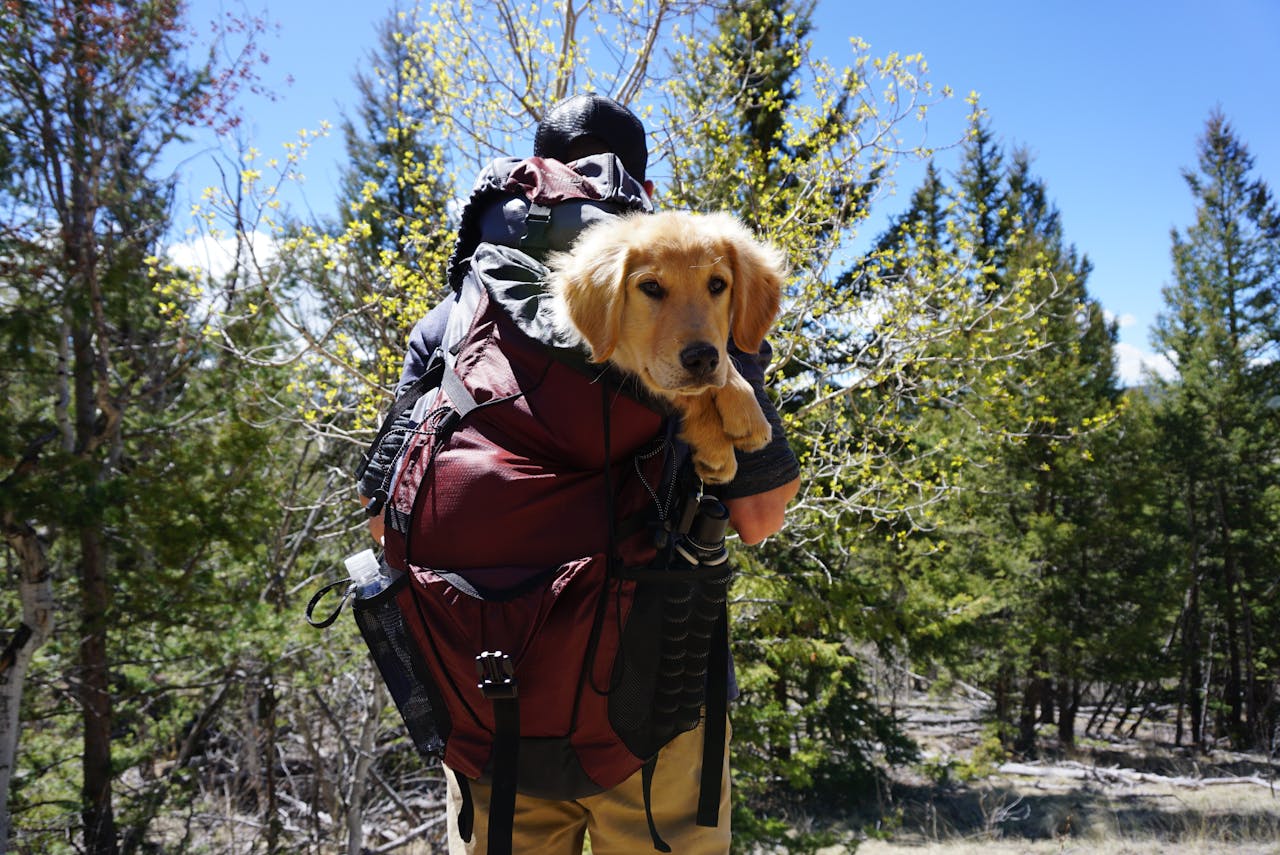
Hiking with your dog can be an incredibly rewarding experience for both you and your furry companion. Not only does it offer an opportunity for you to bond, but it also provides excellent exercise and mental stimulation for your dog. However, hiking with a dog requires some preparation and knowledge to ensure a safe and enjoyable adventure. This guide covers everything you need to know about hiking with your dog, from preparation to trail etiquette.
1. Assess Your Dog’s Fitness Level Before hitting the trails, evaluate your dog’s physical condition. Different breeds have varying levels of endurance and stamina. Ensure your dog is healthy, up-to-date on vaccinations, and has no underlying health issues that might make hiking dangerous.
2. Start with Easy Trails If your dog is new to hiking, start with shorter, easier trails. Gradually increase the difficulty and length of the hikes as your dog builds endurance. This also helps prevent overexertion and allows your dog to get accustomed to the new environment.
3. Gear Up Having the right gear can make your hike more enjoyable and safer:
1. Hydration and Nutrition Just like humans, dogs need to stay hydrated. Bring plenty of water and offer it to your dog regularly. Avoid letting your dog drink from streams or puddles, as they can contain harmful bacteria. Pack high-protein snacks to keep your dog’s energy levels up during the hike.
2. Watch for Signs of Fatigue Pay attention to your dog’s behavior. Signs of fatigue include excessive panting, lagging behind, or laying down frequently. Take regular breaks to let your dog rest and cool down.
3. Trail Etiquette
1. Check the Weather Avoid hiking in extreme heat or cold. Hot pavement or sand can burn your dog’s paws, and cold temperatures can cause hypothermia. If the weather is not ideal, postpone your hike to a safer day.
2. Be Aware of Wildlife Wildlife encounters can be dangerous. Keep your dog on a leash and under control to prevent them from chasing or disturbing wildlife. If you encounter a wild animal, calmly and slowly back away.
3. Know the Signs of Overheating Dogs can overheat quickly, especially in hot weather. Signs of overheating include excessive panting, drooling, lethargy, and red gums. If your dog shows these signs, find shade, offer water, and wet their fur to help cool them down.
1. Check for Ticks and Burrs After the hike, thoroughly check your dog for ticks, burrs, or other foreign objects. Pay special attention to areas like the ears, armpits, and between the toes. Remove any ticks promptly and consult your veterinarian if you find any attached.
2. Clean Their Paws Clean your dog’s paws to remove dirt, mud, or any chemicals they might have walked through. This also gives you a chance to check for cuts or abrasions.
3. Monitor Their Health Keep an eye on your dog’s behavior after the hike. If they seem unusually tired, are limping, or show any signs of distress, contact your veterinarian.
1. Physical Exercise Hiking provides an excellent workout for your dog, helping to maintain a healthy weight and build muscle. Regular physical activity is essential for a dog’s overall health and well-being.
2. Mental Stimulation The sights, sounds, and smells of nature offer a rich sensory experience for your dog, providing mental stimulation that can help reduce boredom and anxiety.
3. Strengthening the Bond Spending time together in nature strengthens the bond between you and your dog. Shared experiences and overcoming challenges on the trail can deepen your connection.
1. Research Dog-Friendly Trails Not all trails are dog-friendly. Research trails in your area to find those that allow dogs. Websites, apps, and local hiking groups can be excellent resources for finding dog-friendly hikes.
2. Consider the Terrain Choose a trail that matches your dog’s fitness level and experience. Avoid trails with steep climbs, loose rocks, or other hazards that might be challenging for your dog.
3. Check the Regulations Some trails have specific regulations for dogs, such as leash laws or restricted areas. Make sure you understand and follow these rules to avoid fines and ensure a positive experience for everyone on the trail.
Hiking with your dog can be a fantastic way to enjoy the great outdoors and stay active together. With proper preparation, attention to safety, and consideration for others on the trail, you and your furry friend can have many enjoyable adventures. Remember, the key to a successful hike is ensuring that both you and your dog are comfortable, safe, and having fun. Happy hiking!